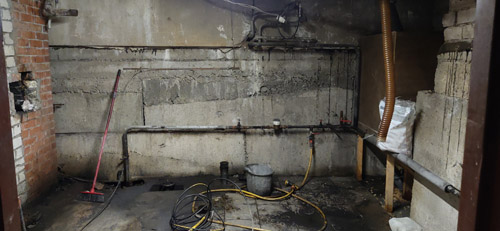
Waterproofing basement walls from the inside is a common practice in order to prevent mold growth and structural damage. This process involves applying waterproof coatings or membranes, sealing cracks with epoxy injections, and installing a perforated drain system.
Basement waterproofing is an important step in preventing water seepage and flooding of the lower floors of a building. It requires specialized techniques to ensure that any moisture-related issues are addressed effectively. As part of this process, homeowners may be wondering if there are any DIY approaches they can take to protect their basement walls from water damage.
The leading cause of flooding in basements is due to rising groundwater levels around the foundation walls which leads to flooding through cracks or openings in your basement floor or walls. Seepage occurs when ground moisture evaporates or seeps into porous concrete foundations, allowing water penetration on either side of the wall as well as along joints and seams. Finally, condensation often results from humid air that contacts cold surfaces like pipes, ducts and even concrete floors creating pools of standing water over time.
Benefits Of Basement Waterproofing
Basement waterproofing is an important process for homeowners. It involves sealing off the basement from moisture and water, as well as protecting it from any damages that could be caused by these elements. Basement waterproofing can help to protect a home's foundation and prevent structural damage, mold growth, and other problems related to flooding or high humidity levels. This article will discuss the different methods of basement waterproofing available, their advantages and disadvantages, and how they are implemented in practice.
What Is The Most Effective Way To Waterproof My Basement Walls?
As the adage goes, a stitch in time saves nine. Basement waterproofing is an essential element of home maintenance and upkeep that should not be overlooked. It helps prevent wet basements or water seepage into homes which can cause damage to the structure as well as its contents.
These scenarios require specialized solutions such as caulking, sealing any visible cracks or gaps in your foundation walls and using a sump pump system to remove excess water from your basement area. Taking preventative measures now will save you thousands of dollars down the road - not to mention spare you from experiencing an unimaginable nightmare! Therefore, if you�re looking for peace of mind it may be wise to invest some time researching how best to protect your home against potential threats posed by basement water damage.
The first step is typically sealing off any openings that lead into the crawlspace by using vapour barriers or airtight covers. This helps create a controlled environment so that humidity levels stay low while preventing water infiltration from outside sources such as rainwater or groundwater seepage. Furthermore, dehumidifiers can also be installed inside the space which helps maintain good ventilation and keep mould growth at bay.
Structure Solutions Experts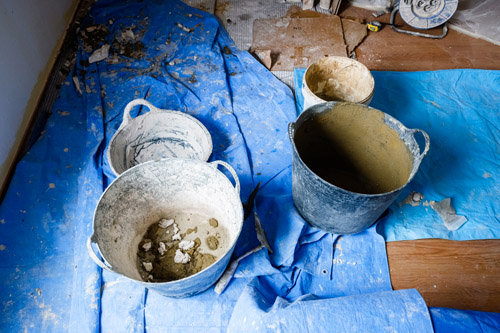
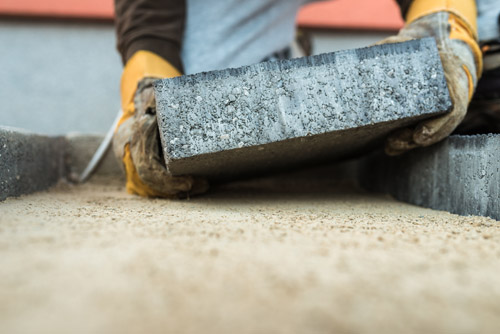
When selecting a sealant, it's important to consider factors such as what type of wall material requires sealing, how much coverage will be needed, and whether any additional coatings should be applied afterwards. Certain products may also need adequate ventilation in order to provide maximum effectiveness. Additionally, some sealants can take up to 24 hours before they fully set so proper preparation time needs to be taken into account when planning this project.
In addition, faulty plumbing fixtures like sump pumps that have been improperly installed could create further problems if they aren't regularly inspected and maintained. Homeowners should pay close attention to any potential leaks around showers, bathtubs, pipes and faucets since these components often fail first when subjected to long-term exposure with rising water tables. As soon as any of these symptoms are identified, homeowners should take immediate action before the situation escalates into more significant damages.
Subsurface drainage systems require digging trenches around the perimeter of the basement�s exterior walls and installing pipes with gravel backfill over them. These will help redirect any incoming groundwater away from the property before reaching its foundation walls; thereby preventing against costly damages due to high levels of moisture accumulation within the space itself. Furthermore, they can also be combined with sump pumps if additional protection is desired in order to fully safeguard one�s home and possessions inside it from potentially hazardous conditions caused by Mother Nature herself.
By understanding these different options available for do-it-yourselfers looking to protect their homes from unwanted moisture intrusion, homeowners have more control over which approach works best for them and their budget requirements - ensuring a safe haven free from floods or mildew buildup for years to come.
Tips For Preparing For Waterproofing
Drainage System Options: Surface & Subsurface
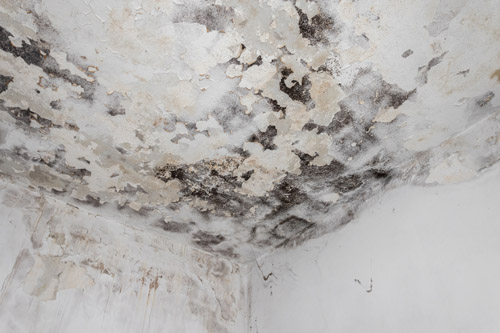
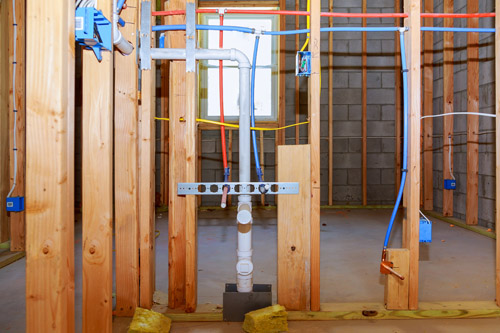
In some cases, installing a sump pump can also be beneficial for basement waterproofing efforts. A sump pump works by collecting excess groundwater and pumping it away from your foundation and out of your yard so it doesn�t build up again and cause more damage later on. It should be noted though that these pumps require regular maintenance due to their mechanical components potentially wearing down over time since they are constantly running whenever ground levels reach certain heights near your foundation walls.
What Is The Difference Between Surface And Subsurface Drainage Systems?
What Are The Most Common Causes Of Basement Water Damage?
It is not uncommon for people to consider undertaking projects on their own when it comes to home maintenance and repair tasks. Furthermore, with the right tools, materials and knowledge it is possible to undertake certain types of work without having to hire professionals. For instance: �\tSurface Preparation � This includes cleaning the walls using detergent or degreaser as well as removing any existing sealer or paint so that a new coat can be applied properly; �\tApplication Options � When applying a waterproof coating, choosing between elastomeric paints, concrete sealers and membrane sheets depends on the level of protection required; �\tInspection - Checking for cracks in the wall prior to application is essential as these could cause problems down the line if left unaddressed.
Diy Methods For Waterproofing Basement Walls
Waterproofing basement walls is a common challenge for many homeowners. A leaky basement can lead to costly water damage and require expensive repairs or replacements of items such as furniture, flooring, drywall, and personal possessions. Preparation is the key to having a successful waterproofing project in any home.
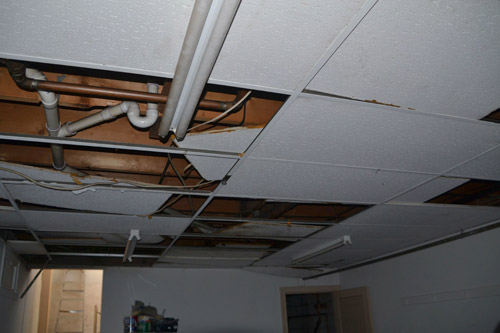
The area can dry out more quickly by using a dehumidifier, fans, and making sure the area is adequately aired. It's critical to start drying out the basement as soon as possible because mold might begin to form in just two days. It is not unusual for the basement to require several days to completely dry out, especially if the water was deep.
Continuous rain saturates the earth, causing hydrostatic pressure (or water pressure). This pressure pushes moisture through the floor and walls of your basement. Your foundation's surrounding loose dirt absorbs water. Rainwater that collects directly adjacent to your foundation clogs your gutters and drains.
By definition, a basement is the foundation of your house, whether it is partially or completely underground. Naturally, this means that even in dry weather, they are vulnerable to floods. Typically, gravity is to blame. Apr 5, 2018